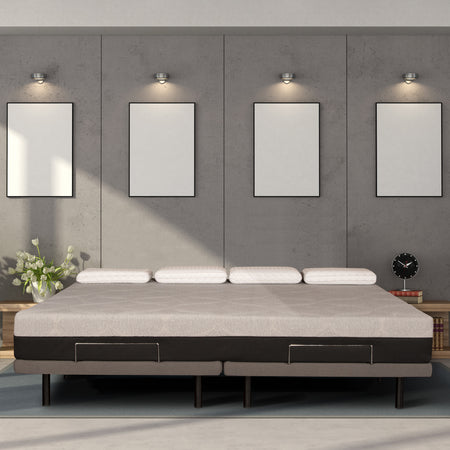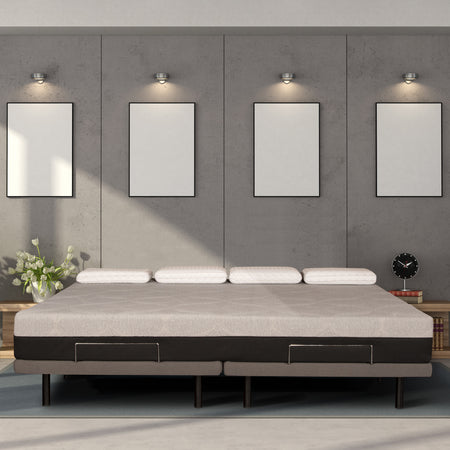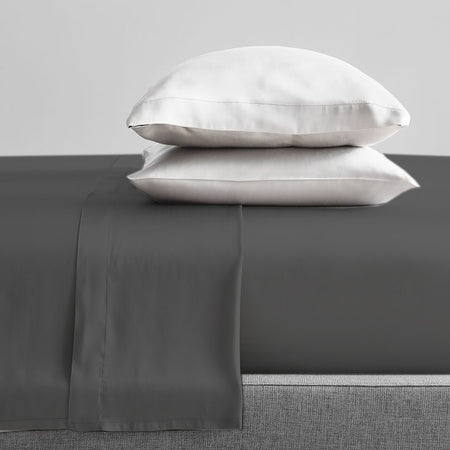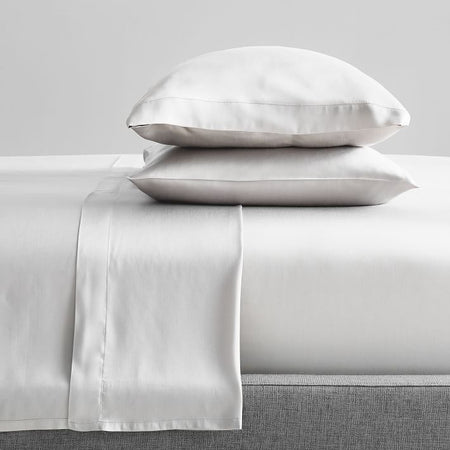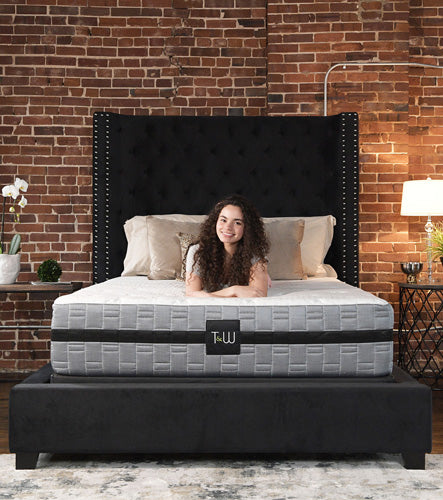An average person spends about 33 years of their life in bed, 26 of those sleeping and seven trying to get to sleep. If this statistic is anything to go by, sleep is one activity you’ll spend most of your life doing. This shouldn’t come as a surprise, considering how critical sleep is.
The NIH says good sleep improves mood, brain performance, and overall health. On the other hand, lack of sleep increases the risk of many disorders and diseases. That’s why keeping your bedroom in prime condition for optimal sleep cannot be overstated.
This guide will explore some easy upgrades for better sleep. Most of these upgrades are easy, but if you’re having difficulty implementing them, an interior designer can help.

Assess your Sleep Space
Before diving into upgrades, take a critical look at your bedroom. Identify elements that contribute positively to your sleep environment and those that may need improvement. Are your bulbs energy-efficient? Is your furniture proportional to your bedroom size? Are the area rugs still in good condition? Is the overall bedroom design in line with what you want it to be? What about the color scheme, storage, etc.? This initial assessment sets the basis for a personalized approach to transforming your bedroom into a sanctuary for quality sleep.
Upgrade your Mattress and Bedding
Upgrading your bed is one of the easiest and most effective ways to revitalize your bedroom. After all, your bed is the focal point of the room and the primary factor influencing the quality of your sleep.
Begin this transformative process by focusing on your mattress. A worn-out or uncomfortable mattress can contribute to various sleep issues, from aches and pains to restless nights. Consider your preferences, sleeping position, and any specific health considerations when considering a brand-new mattress.
Memory foam contours to your body, and offer customized support, while spring mattresses provide a responsive, springy feel. Hybrid mattresses strike a balance, giving you the best of both worlds.
Next, replace your old bedding with quality, breathable ones for a better overall sleep experience. While at it, get supportive pillows that match your sleeping position and preferences – whether you prefer the softness of down or the support of memory foam.

Work on the Lighting
Bedroom lighting plays a crucial part in how our mind and body function. Soft, relaxing light can help provide a restful night, while poor-quality lighting will disrupt sleep. If you have harsh, bright lights in your bedroom, this is the best time to replace them with dimmable options that mimic evening light. Recessed lighting and LED bulbs are a great choice because they create a warm and calming ambience while minimizing energy consumption.
You can also implement window treatments such as blackout curtains or blinds to control external light sources. This ensures a darkened environment conducive to quality sleep. Thoughtful selection and arrangement of bedroom lighting contribute to an aesthetically pleasing space and play a crucial role in signaling the body for winding down.
Address Noise Issues
Nocturnal noise can fragment sleep and restribute the time spent in the different sleep stages. If you are constantly experiencing noise from street traffic, neighbors, household appliances, pets, etc., you’ll need to address the issue when upgrading.
So, if the problem is external noise, you should invest in soundproofing, which involves adding weather-stripping to windows and doors, installing heavy curtains, or using acoustic panels on walls. If it’s internal noise, such as creaky wood floors or loud appliances, strategic placement of area rugs or using door draft stoppers can absorb or block sound effectively.
You can also consider introducing white noise machines or soothing nature sounds to mask background disturbances. These devices create a consistent and calming audio backdrop, drowning out intermittent noises and promoting a conducive atmosphere for uninterrupted sleep. You can also consider using earplugs designed for sleep for a direct and simple solution.
Introduce Relaxing Scents
Aromatherapy, through soothing scents like lavender or chamomile, promotes relaxation and reduces stress levels. Consider incorporating essential oils into your bedtime routine using a diffuser or placing drops on your pillow. Scented candles with calming fragrances can also create a tranquil ambiance.
The olfactory system is closely linked to the brain's limbic system, which plays a role in emotions and memory. Infusing your bedroom with pleasant scents helps engage this sensory pathway, creating a perfect environment for winding down and facilitating a smoother transition into a restful night's sleep.
Improve Air Quality
Stale or polluted air can adversely affect your respiratory health and overall well-being. So you want to ensure proper ventilation in the room, allowing fresh air to circulate and reducing the concentration of indoor pollutants. Change the air filters in A/C system regularly to maintain clean air.
Additionally, consider incorporating indoor plants known for their air-purifying abilities, such as snake plants or peace lilies, as they can help filter out common airborne toxins. These measures contribute to a healthier sleep space and promote better respiratory function, allowing you to breathe more easily and deeply as you drift into a restful sleep.
Work on your Bedroom’s Décor

Your bedroom's decor can transform into a serene and visually appealing space conducive to quality sleep. Here are a few things to work on:
- Focus on the color scheme: choose calming hues like soft blues, greens, or neutrals to create a tranquil atmosphere.
- Introduce visual interest by creating an accent wall. This could be painted in a contrasting color, adorned with wallpaper, or even textured panels. Keep in mind that the accent wall should complement the overall color scheme and not overwhelm the space.
- Upgrade your bedding with high-quality, coordinated sheets, comforters, and pillows that complement the chosen colors. Add textured elements, such as plush throws or accent pillows, for a cozy and inviting ambiance.
- Arrange furniture to optimize the flow and functionality of the space, avoiding clutter and promoting an open layout. Opt for a ceiling fan to free up a square foot or more on the floor.
- Personalize your space with meaningful decor items such as family photos, artwork, or souvenirs. These personal touches create a comforting atmosphere and contribute to a sense of familiarity.
- Declutter your space by removing unnecessary items and incorporating stylish storage solutions like baskets or shelves.
- Mirrors can create the illusion of a larger space and reflect natural light. Consider placing a full-length mirror or a decorative mirror strategically to enhance the visual appeal of a small room.
Simple furniture arrangement, lighting, and bedding adjustments can transform your bedroom into a haven for relaxation. Quality sleep is fundamental to mood, brain performance, and overall health. For a vast collection of mattresses and bedding to kickstart your bedroom upgrade journey, explore The Bedding Mart. Make your sleep a priority and experience the positive impact of a rejuvenated sleep space.


